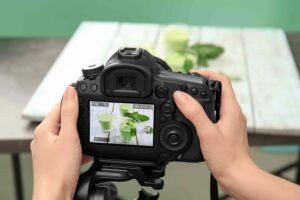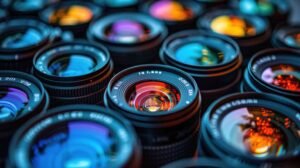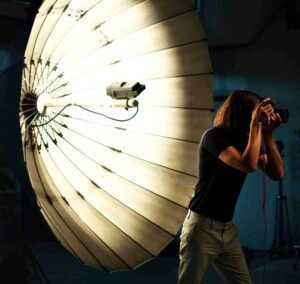This is primarily because context is easily grasped, therefore it follows that product photography is today’s number one way of attracting eCommerce customers.
Make sure that Images showing the product range is not that simple; rather certain wishes and equipment needed for product photography.
At UK Clipping Path, we understand that if there are poor product images that do not excite customers with which they want high sales, the eCommerce business will not flourish. The very reason is what we are trying to explain to you regarding the equipment that you will require for your product photography plan.
Why is Product Photography Important?
Traditionally I highlight first the why the concern of product photography is why the growth of the society has happened over the years: with the increase of online purchases, purchasers are left with the images to base decisions on.
High-quality photos, including good lighting and sharp focus, can help turn a potential client into a buyer. For example, one study has shown that as many as 75% of consumers base their decision purely on pictures of the product.
In either situation, using the appropriate product photography equipment allows the details of the images taken of small items like jewelry or larger products like furniture to be great and consistent thus there is a semblance of being professional.
Let’s go into detail on the kinds of product photography equipment that can be bought and how it will help take simple pictures to another level.
Equipment Needed for Product Photography
The most crucial product photography equipment are the following:
Camera: The Heart of Product Photography

The camera is the most important professional photography equipment for any product photography. While smartphone cameras have made huge progress over the years, nothing beats a professional camera which is essential, especially in large product catalogs or more complicated setups where image quality is paramount.
Best Cameras for Product Photography
- DSLR Cameras: These avail very high picture quality, interchangeable lenses and full manual controls. Best DSLR cameras include Canon EOS 5D Mark IV and Nikon D850 with very good resolution and dynamic range.
- Mirrorless Cameras: It has already been pointed out, however, that these cameras are smaller pale od c-layers or DSLR cameras and are therefore of the same quality. The Sony Alpha a7R IV or Canon EOS R5 with its fast AF and high resolution is perfect for shooting product photography.
Camera Features to Consider
- Resolution: It should at least have 20 megapixels to boost close-up shots of product details. Greater megapixels mean editing and cropping can be done free without any loss of quality.
- Manual Controls: The most essential factor in the camera is the complete manual adjustment of ISO, Shutter speed and Aperture. It plays a crucial role in the management of exposure and the control of depth of field.
Lenses: Capturing Detail with Precision

In addition to the body which includes the camera, lenses are also of great consideration. They help in changing the whole image’s look and style when product shots are taken and different types of lenses are used. The range of 14-24 to 70mm for large digital cameras would be ideal for product photography to take care of all intricate details, especially on small objects.
Recommended Lenses
- 50mm Prime Lens: The functional camera lens for product photography, and one that needs to be in your camera kit. The camera bends perspective appropriately with sharp focusing that works well in capturing objects ranging from small to medium size. Popular lenses from these two brands Auston are Canon EF 50mm f/1.8 stm and Nikon AFS fx nikkor 50mm f/1.4g.
- Macro Lens: Most of the macro lenses come with built-in features, which capture special images of minute objects like earrings, cameras, or makeup. Some of the lenses that capture excellent clear pictures at such a close distance include Canon EF 100mm f/2.8L Macro IS USM or Nikon AF-S DX Micro NIKKOR 85mm f/3.5G.
Lens Features to Look For
- Focal Length: A focal length between 50mm to 100mm falls pretty ideal for general product photography. It reduces distortion and can represent the product as real as he/she can.
- Aperture: Using a wider aperture lens set say within the scale of f/1.8 and f/2.8 allows entry of a bigger room or scattered light thus creating shallow depth of field images with beautiful blur around the products and holding the other image (which is the product) parallel and in focus.
Lighting: The Key to Professional Product Photography

Lighting is the most important tool when it comes to product photography. Even with the most expensive camera and the best lens, there will be no better outcome when the lighting is wrong. Proper lighting ensures all your products are illuminated well, colors are true, and chances of shadows are highly reduced.
Types of Lighting Equipment
- Continuous Lighting Kits: The best result in product photography as the light is on and one can see the effect in real-time of how shadows and light highlights fall on a product. Some very good options are the Neewer LED Light Kit and Godox SL-60W.
- Softboxes and Umbrellas: They do well in softening the shadows cast. In product photography toxic lighting is a vast resource, but as one of the light sources, a softbox such as Neewer Softbox Lighting Kit or an umbrella-like Westcott 43-inch Optical White Satin Collapsible Umbrella for balanced dispersal of light is also required.
- Ring Lights: These are effective for smaller items or small detail shots, where an even and diffused light with fewer shadows is desired. One of the trending products with the photographers is the Neewer Ring Light Kit.
Lighting Tips
- Using Multiple Sources of Light: By having one source as the main or key light and then fill lights that are placed strategically to reduce shadows that one would want to diminish to produce high-quality images.
- Balance Your Shadows: Tilt the light further concerning the object or lean the reflector further to feather the shadow. A reflector can be something as simple as a piece of white styrofoam on the opposite side of the light source.
Tripods: Stability is Key
If you are shooting in bad light or have to keep your shutter speed lower than normal, a tripod is going to bring stability and sharp images to those photographs as well. What’s more, with a good, solid tripod one can even crop the images as well as hold the product for a longer time in place when she is doing the focusing.
Best Tripods for Product Photography
- Manfrotto MT055CXPRO4: Carbon fibre tripod, sturdy but lightweight, highly adjustable, meant for the most professional of photographers.
- Joby GorillaPod: In the case tight spaces had to be used to work from, or one needed to put the camera from distorted angles, the flexible legs provide the freedom to do so.
Backgrounds: Clean and Consistent Presentation
In addition, a clean and neat uncluttered background helps direct the attention of the viewer to the product. A suitable background for product photography, on the other hand, can assist in creating an atmosphere for the images.
Popular Background Options
- Seamless Paper: Seamless paper is available in almost all colours and has the advantage of providing a creaseless and smooth background. One of the most popular used by professionals is Savage Widetone Seamless Background Paper.
- Light Box: A lightbox would create a contained environment making it convenient for shooting the products and great lighting would be given for small to midsized products. Models like the AmazonBasics Portable Photo Studio even out the light with a white background.
- White foam boards: Those are the simplest and cheapest tools that one can use for background development. Moreover, these foam boards, apart from being a good background, can also be used to control lighting as they are quite reflecting.
Background Tips
- Use neutrals: Product photography can be done with many different backgrounds and a white or light grey neutral background will do for most of the situations. It helps place the product in focus and gives every area of the pictures a tidiness feel.
Additional Product Photography Accessories
For capturing the perfect image of your product, here are a few product photography accessories which will be appreciated as an enhancement to your collection of tools:
- Reflectors and Diffusers: While reflectors are useful for directing the light which is to be shed upon the product reducing the shadows, diffusers eliminate the Harsh Light. Balanced lighting applies in photographic work and these two tools become very important.
- Tethering Cable: Tethering one’s camera to a computer enables the photographer to view the pictures being taken on the large screen using a computer rather than a camera. Sometimes it helps a lot, for example, when a problem is diagnosed that may not be very easy to notice on small LCD screens of cameras.
- Remote Shutter Release: It acts as the common practice to correct pictures where one tends to shake the photo, often when the shutter speed is slow or when using macro lenses.
Post-Processing Tools
Most post-processing services therefore involve editing or touching up the images that have already been taken. Most of the product images do need a shot or capture and the addition of retouching of these images to get the right colors and delete unwanted aspects or impurities from these images.
UK Clipping Path offers a re-touching of the images as well as clipping path services in a way that even retouching is done to enhance the images and make them professional.
Software for Post-Processing
- Adobe Photoshop: It is the standard which is available today and used in the industry for image editing. This mainly offers numerous features whereby background removal, and color adjustment among other details can be done through this software.
- Adobe Lightroom: Now made better by the painless batch processing, it also has some very nice editing features and presets to help you get the right shot of your product.
Conclusion
From camera and lenses to lighting setup, it’s time for you to carefully select the equipment needed for product photography. A perfectly tuned photography setup will allow you to capture great product images, where the sure-shot in conversions requires some advanced editing.
Here, the product photo editing services come in to help you get maximum ROI in your eCommerce business.


